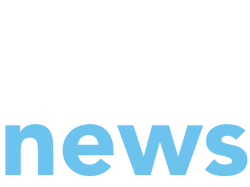OAK LAWN – Driving northeast along Southwest Highway in Oak Lawn, a sizeable, yet non-assuming brick building with the sign “Meyer Tool” would normally not be noticeable.
But behind the doors underneath Meyer Tool’s sign is a surprising array of projects that is changing the world as we know it – and it’s very likely most the people of Oak Lawn have no idea what’s inside.
In 1969, the company’s founder Frank Meyer, a machinist, was laid off from Argonne National Laboratory and started his own machine company in his southside garage. He worked at and ran Meyer Tool until his death in 2006.
In the early 1990s, Meyer Tool’s current CEO Eileen Cunningham joined her father’s company with the assignment of expanding and updating its accounting system – just as she was about to graduate from business school.
“As time went by, I became more responsible for things and became more and more a part of the decision-making team here at Meyer Tool,” she said. “Then when it was time to for him to set up a succession plan, and he asked me if I would be interested in being in the plan. “
She told him she was interested, and with that, the former Ms. Meyer agreed to carry on the family business for her father.
Now a wife and mother of three sons and a daughter, Mrs. Cunningham says her father entrusted her with the company’s finances and business development, while other team members with expertise in engineering, physics and tool making he entrusted with the Meyer Tool tradition of creating mechanical tools, products and prototypes.
Among its history-making projects, Meyer Tool manufactured eight cold boxes for CERN’s Large Hadron Collide. CERN, the commonly used name for the European Organization for Nuclear Research, is home to the world’s largest particle accelerator, located in Switzerland. Renowned physicist Stephen Hawkings contributed to the project, and was photographed with Meyer’s work.
In addition to Switzerland, Meyer Tool has provided components for projects at nearby Argonne National Laboratory and Fermilab, and as far away as National Synchrotron Radiation Research Centre in Taiwan.
“Our work is competitive locally, nationally and internationally, “ Cunningham said.
A current project with Princeton University will send a weather balloon above the South Pole in order to evaluate infrared rays and their penetration of the earth’s atmosphere.
These projects are exciting and challenging, Cunningham says, but the job of continuing Meyer Tool as a successful business is a challenge in and of itself in a fast-paced, highly-competitive culture.
Besides the personal struggles of balancing family and marriage with the demands of Meyer Tool is the responsibility of providing for other families, she said.
“Being at the helm of company where members of 35 other families are depending on you for their living and their ability to enjoy life, that’s a big deal,” Cunningham said. “I always try to keep in mind how what we do will affect them when making company decisions.”
But it’s even more complicated than that, she said.
“Business challenges definitely include responding to the always increasing economic pressures – whether they be increasing taxes and fees or the Internet increasing competition,” she said. “When the economy gets bad, others may jump in to do what we do and diversify, so there’s a low cost, low quality provider that doesn’t even know what they’re getting into. With that, it becomes a challenge to maintain relationships with our customers and remind them of Meyer Tool’s quality and low project risk.”
And that low project risk is key, Cunningham said.
“We’re building things that often have never been built before, or something that’s been built, but you don’t need the same particle accelerator – you need the next generation,” she said.
“People come to us and say ‘I have this idea, can you prototype it for me?’ Reducing that project risk means when you have a big, long production run, you iron out the kinks in the first couple of pieces. You get your process down, and then you build how many thousands of flawless parts,” she said.
In the type of work Meyer Tools does, they don’t have opportunity for trial and error.
“When we’re building the first one, it has to work as the customer intended it to,” she said. “We’re dealing with scientists, physicists, people who may not have built things before, but they know what they need it to do. We help them make it happen.”
Some of Meyer Tool’s work is design built, some is “built to print,” but Cunningham says they try to work closely early on in development to prevent losing time and costing the customers.
“When you’re building something unique or complex, that’s when we shine,” she said. “We try to realize catches and glitches before it goes to manufacturing.”
Meyer Tool has experienced toolmakers that have been doing this type of work for over thirty years, making the risk minimal.
In 24 years of work at Meyer Tool, Mrs. Cunningham has seen a lot of amazing projects and she’s very proud of the results.
“I take a tremendous sense of pride in what my father built, and that it is continuing on, “ she said. “I’m so proud of what he accomplished from Argonne to this, that he had the courage to set out on a unique and different path.”
“Another part of pride is where our products go – they make an impact. I think everybody here has a sense of pride that the work they do has an impact on the world around them. “
Meyer Tool is at the company’s third location at 4601 Southwest Highway in Oak Lawn, Illinois.
By Fran Eaton. First published by Technology & Manufacturing Association in 2014.


